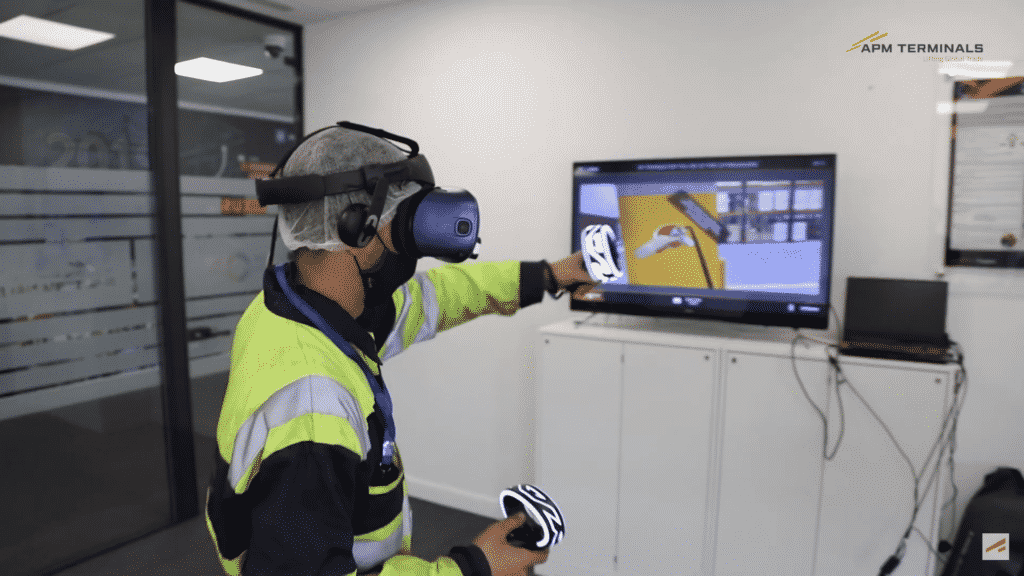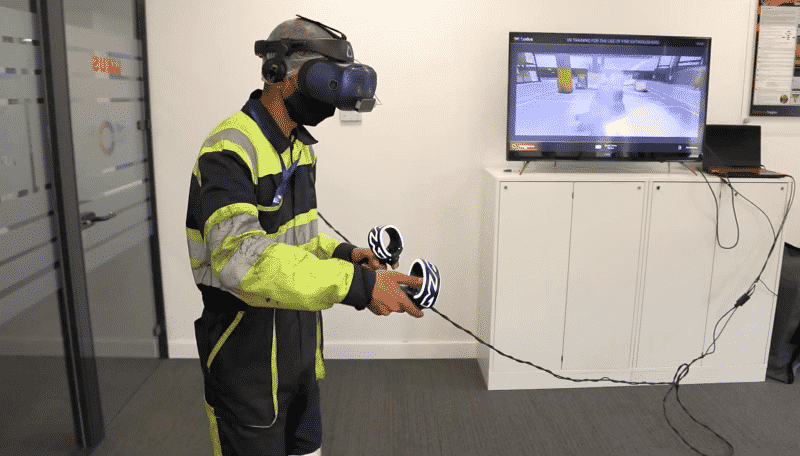
[ad_1]

APM Terminals MedPort Tangier, Morocco began incorporating Virtual Reality (VR) technology into its safety trainings in 2020. Now, with a proven track record, training modules cover around 14 safety topics and provide a rich training experience that allows individuals to feel and react to near-real-life scenarios.
The safety scenarios cover APM Terminals ‘Fatal 5’ areas of risk that contribute to the majority of incidents in a terminal, such as working at height or suspended loads. Other modules cover fire, first aid, and personal protection equipment, without ever putting participants in danger.
“Virtual reality not only increases engagement for safety training and appeals to a broader audience, but it increases the effectiveness of critical safety training and improves safety behavioural attitudes,” says Ahmed El Amrani, HSSE Manager at APM Terminals MedPort Tangier.

Image Credits: apmterminals.com
Immersive Exposure
“It enables trainers to put employees in simulated scenarios that would simply not be possible in real life and gives them a much more valuable ‘real context’ of when they might face dangerous situations. Through immersive exposure it increases the retention of trainees’ knowledge.”
Even taking development costs into consideration, compared to classroom-based training, virtual reality training is much more cost effective. The software behind the training continually evaluates participants, monitoring their performance on an individual basis and adjusting the training experience and difficulty level based on the participants need, from junior to expert. This isn’t always possible in a group classroom situation.
“Before we fully embraced virtual reality, we carried out a study to test how it would match up to more traditional methods of training,” explains Amrani. “The study measured VR training against a number of attributes, such as the commitment of the personnel in matters of health and safety at work, reduction in training costs, and overall effectiveness.
“A group of employees took part in VR training modules that they had previously completed in a traditional classroom situation. They were then asked to rate the trainings against a number of dimensions. In a comparison of the results against previous classroom-based training there was no questioning the effectiveness of VR.”

Image Credits: apmterminals.com
Participants, for example, were asked to rank their attitude towards safety. VR training scored 54 percentage points higher than classroom-based training. Furthermore, 100% of participants found the content interesting and very engaging.
Safety Management Framework
Technology & Innovation is one of four core elements of APM Terminals Safety Management Framework. Operational risk areas have been identified and well trained HSSE leaders are in place to encourage learning. Over the years APM Terminals have developed a safety culture, the fourth element, which encourages staff of all levels to take ownership of safety.
Thousands of leader-led safety walks are carried out every year across its terminals to ensure that operations are as safe as possible and to ensure that people on the front line are empowered to take needed actions for improvement. This was reinforced during the company’s recent annual Global Safety Day in September.
Reference: apmterminals.com
Marine Insight does not own the rights of the video.
Watch: Virtual Reality Brings Safety Training To Life At APM Terminals appeared first on Marine Insight – The Maritime Industry Guide
[ad_2]
This article has been posted as is from Source